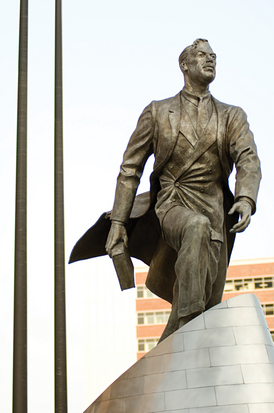Harlem
Harlem has been a black community for over 100 years. In that time it has been called the “Capital of Black America,” the “Negro Culture Capital of the World,” and even the “Promised Land.”
Settlement of Harlem dates back to Dutch times when Africans cleared the land as well as the road that led to it from New Amsterdam, which lay 9 miles away. A bit later, the neighborhood was Irish, Jewish, and Italian. It was not until overbuilding caused vacancies that blacks were allowed to move in. That was in 1904, when a black real-estate agent named Philip A. Payton promised landlords that he could find renters if they would allow African Americans. The landlords agreed and several buildings were quickly filled. The white population began to flee, causing more vacancies and even more blacks to move in.
Some of the new tenants, such as Madame C. J. Walker, were wealthy. Others were writers such as Langston Hughes or painters such as Jacob Lawrence. Over time, more and more residents were poor, part of the Great Migration from the South. During that time, thousands of blacks left their homes, friends, and relatives in the South and migrated North to the “Promised Land.” By the 1920s, there were more African Americans per square mile in Harlem than in any other place on Earth. The gathering of poets, dancers, musicians, and artists then became known as the Harlem Renaissance.
This entry contributed by
Curriculum Concepts International
Related Media
Video

|
Manning Marable, Professor of History at Columbia University, discusses Harlem.
|

|
Robert O'Meally, Professor of English at Columbia University, discusses the Harlem Renaissance.
|
Images

|
This photograph of 125th Street in Harlem, taken on September 17, 1949, originally ran with a caption emphasizing "parking congestion."
|

|
Visitors to Harlem today can find information at a kiosk at 163 W. 125th Street, the Adam Clayton Powell State Office Building. There you can also see a statue of Powell.
|

|
Author Langston Hughes with (left to right) Charles S. Johnson, E. Franklin Frazier, Rudolph Fisher, and Hubert T. Delaney. All were part of the Harlem Renaissance.
|







